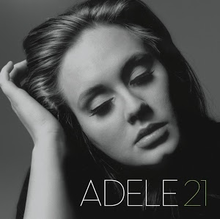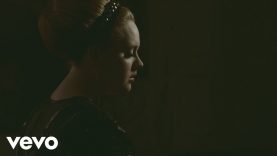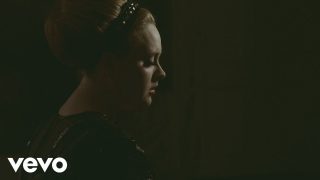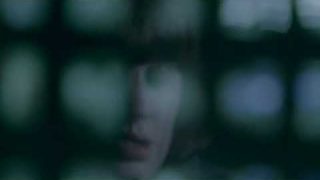Adele – Don’t You Remember (Live at Largo)
redrover61
Lyrics:
[Verse 1]
When will I see you again?
You left with no goodbye, not a single word was said
No final kiss to seal any seams
I had no idea of the state we were in
[Pre-Chorus]
I know I have a fickle heart and bitterness
And a wandering eye, and a heaviness in my head
[Verse 2]
When was the last time you thought of me?
Or have you completely erased me from your memory?
I often think about where I went wrong
The more I do, the less I know
[Pre-Chorus]
But I know I have a fickle heart and bitterness
And a wandering eye, and a heaviness in my head
[Outro]
When will I see you again?
21 (Adele album)
21 is the second studio album by English singer-songwriter Adele. It was released on 24 January 2011[1] in Europe and on 22 February 2011 in North America. The album was named after the age of the singer during its production. 21 shares the folk and Motown soul influences of her 2008 debut album 19, but was further inspired by the American country and Southern blues music to which she had been exposed during her 2008–09 North American tour An Evening with Adele. Composed in the aftermath of the singer’s separation from her partner, the album typifies the near dormant tradition of the confessional singer-songwriter in its exploration of heartbreak, self-examination, and forgiveness.
Adele began writing 21 in April 2009, when still involved in the relationship that subsequently inspired the record. Dissatisfied with once again portraying herself as the musical tragedian of her debut, she had intended to compose a more upbeat and contemporary follow-up. However, studio sessions ended prematurely due to a lack of inspiration. She resumed production immediately after the breakdown of her relationship, channelling her heartbreak and depression into her songs. Adele collaborated with various songwriters and producers, including Columbia Records co-president Rick Rubin, Paul Epworth, Ryan Tedder, Jim Abbiss, and Dan Wilson.
Praised by critics for its understated production, vintage aesthetic, and Adele’s vocal performance, 21 defied the modest commercial expectations of her indie record label XL Recordings. The album topped the charts in more than 30 countries and became the world’s best-selling album of the year for 2011 and 2012. In the United Kingdom, it is the best-selling album of the 21st century and fourth best-selling album of all time, while its 23-week tenure atop the UK Albums Chart is the longest by a female solo artist. In the United States, the album held the top position for 24 weeks, longer than any other album since 1985 and the longest by a female solo artist in Billboard 200 history.[2] As well, it had the most weeks on the Billboard 200 chart of any album by a woman.[3] It was certified Diamond by the RIAA and was ranked as the “Greatest Billboard 200 Album of All Time.”[2] It’s also the most certified album ever with more than 400 certifications all over the world.
Five singles were released to promote the album, with “Rolling in the Deep,” “Someone like You” and “Set Fire to the Rain” becoming international number-one songs, while “Rumour Has It” charted in the top 20 across Europe and North America. Globally, 21 was the biggest selling musical release for both 2011 and 2012, and helped revitalise lagging sales of the UK and US music industry. With over 31 million copies sold worldwide,[4] 21 is one of the best-selling albums of all time. Critics hailed the album as a shift from the overtly sexual and musically bombastic status quo, and attributed its success to its deeply autobiographical yet universal songs.[5] Shortlisted for the 2011 Mercury Prize, 21 won the 2012 Grammy Award for Album of the Year and the Brit Award for British Album of the Year.

Writing and production
Early writing sessions
In April 2009, 20-year-old Adele, who had recently embarked on her first serious relationship with a man 10 years her senior,[6] began composing the follow-up to her 2008 debut album 19.[7] In response to the media’s typecasting her as an “old soul” due to the vintage production and sentimental nature of her songs,[8] Adele decided on a more upbeat and contemporary second album.[7] However, studio sessions were generally unproductive and, after two weeks, yielded only one song recorded to the singer’s satisfaction—the Jim Abbiss-produced “Take It All,” a lovelorn piano ballad not unlike the songs on 19.[7][9] Disillusioned with lack of inspiration and the slow progress of the studio sessions, she cancelled the remaining recording session dates.[10]
Adele had written “Take It All” during a difficult moment in her relationship. When she played the song for her boyfriend, the two got into a bitter argument that culminated in the end of their 18-month relationship.[11] Heartbroken but musically stimulated, Adele channelled her rush of emotions into her music, crafting songs that examined her failed relationship from the perspectives of vengeful ex-lover, heartbroken victim, and nostalgic old flame.[12][13][14]
Sessions with Epworth, Smith, and Tedder
Writing for the album began shortly after Adele separated from her lover. Within a day of her break-up, she contacted producer Paul Epworth, intent on capturing her emotion in a song: “We’d had a fuming argument the night before … I’d been bubbling. Then I went into the studio and screamed.”[7] Although she had initially planned on completing a ballad that she had begun writing with Epworth more than a year ago, the producer suggested that she aim for a more aggressive sound.[17][18] Together, they restructured the song and re-wrote lyrics to reflect Adele’s recent experience, deciding on the title “Rolling in the Deep.”[17] The instrumentation evolved organically—after trying out various jazz riffs, Adele attempted the first verse a cappella, inspiring Epworth to improvise a melody on his acoustic guitar. A thumping drum beat was set to mimic her racing heartbeat.[17] In two days, a demo was recorded to be produced by Columbia Records co-president Rick Rubin later that year. However, Adele re-approached Epworth months later to complete production of the song.[19]
British producer Fraser T Smith recalled following a similar trajectory when he teamed up with Adele to compose the subsequent third single “Set Fire to the Rain” at his MyAudiotonic Studios in London.[19] After the two had created the demo, Adele revisited her co-writer to record the song with him, instead of the intended producer Rick Rubin. Smith thought Adele’s first attempt superior to subsequent takes, and used the demo as the final production of the song, complete with live drum sounds and an elaborate strings section (arranged by British musician Rosie Danvers).[19][20]
With the demos to two songs recorded, Adele approached American musician and OneRepublic frontman Ryan Tedder, who was in London at the time for a radio show. Tedder had expressed interest in collaborating with the singer after they met at the 2009 Grammy Awards ceremony in February.[21] He arrived four hours early to their first studio session, buying time to better familiarise himself with some of her previous work.[19] Although unaware of Adele’s personal predicament, he composed the opening piano sequence and first few lines to what became the lovelorn ballad “Turning Tables“: “Close enough to start a war/All that I have is on the floor.”[19] Coincidentally, it perfectly captured the experience of the singer, who arrived at the studio moments after another altercation with her former lover. Angry and unfocused, she denounced her ex-lover’s tendency to “turn the tables” on her during their arguments, an expression that Tedder decided to reference in the song’s lyrics.[21] Adele recorded the demo with Jim Abbiss the following day.
Adele and Tedder arranged a second meeting and reconvened at Serenity West Studios in Los Angeles weeks later to write and record “Rumour Has It.” In an interview, Tedder recalled his astonishment at the singer’s musicality and vocal prowess after she completed the main vocals to the song in 10 minutes: “She sang it once top to bottom, pitch perfect, she didn’t miss a note. I looked at the engineer then at her and said, ‘Adele I don’t know what to tell you but I have never had anyone do that in ten years’.”[19]
Sessions with Rubin, Wells, and Wilson
Columbia Records co-president Rick Rubin, known for his “stripped-down” sound and unorthodox approach in the studio, was one of the major producers for the album.
After working with Smith, Tedder, and Epworth, Adele travelled to the United States for the remainder of the album’s production. At the suggestion of Columbia Records group president Ashley Newton, she met with songwriter Greg Wells at his studio in Culver City, Los Angeles, where they co-wrote the gospel-tinged ballad “One and Only.”[22] The song evolved from a four-chord piano progression in a 6/8-metre, which Wells had conceived before meeting with the singer.[19] The lyrics, aimed at the singer’s new love interest, came together quickly and were later completed with Dan Wilson, with whom she also composed “Someone like You.”[22] In 2008, Adele’s appearance on the NBC sketch comedy show Saturday Night Live caught the attention of producer Rick Rubin. In the initial stage of the album’s production Rubin had signed on as its sole producer, and was scheduled to produce all of its songs.[23] The demos she had recorded with Epworth, Smith, and Tedder (including “Rolling in the Deep” and “Set Fire to the Rain”) were subsequently rerecorded by Rubin when she met with him in his Shangri-La Studio in Malibu, California in April 2010.[9][17][24]
Rubin, notorious for his unorthodox production style, pushed the singer beyond her comfort zone, and despite being drawn to his unconventional methods, Adele described working with the producer as daunting.[13][25] Rubin had attended many of her shows throughout 2008–2009, and after a Hollywood Bowl performance, approached her to compliment her live sound. When they met in Malibu, he attempted to “capture her live show across on [her] record,”[17] assembling a team of musicians—including drummer Chris Dave, guitarist Matt Sweeney, James Poyser on piano, and Pino Palladino on bass—to contribute live instrumentation to the recording sessions.[7][26] He also decided against the use of music samples and electronic instruments.[25] An advocate of a more free-form approach to music-making, Rubin relied on the moods and feelings behind the music itself to guide the instrumental and melodic arrangement of the songs.[27] He isolated the singer in the studio and encouraged her, as well as his team of musicians, to approach the production process with more spontaneity and less restraint.[13][25] The singer even recalled moving the musicians and production team to tears while recording some of the songs.[28] In an interview, he commented on the nature of the recording sessions:
Her singing was so strong and heartbreaking in the studio, it was clear something very special was happening … The musicians were inspired as they rarely get to play with the artist present, much less singing … Today, most things are recorded as overdubs on track. This was truly an interactive moment where none of the musicians knew exactly what they were going to play and all were listening so, so, deeply and completely to figure out where they fitted in … all of the playing was keying off the emotion on Adele’s outrageous vocal performance.[19]
After recording the album with Rubin, Adele was dissatisfied with many of the songs.[24] Ultimately, she decided to scrap most work done in favour of the early takes she did with other producers, including Epworth and Tedder, in order for the music to reflect the raw emotion felt immediately after her break-up.[29] From her collaboration with Rubin, only five songs appeared on the album: “Don’t You Remember,” “He Won’t Go,” “I’ll Be Waiting,” “One and Only,” as well as the U.S-only track “I Found a Boy.” Weeks after her stint with Rubin, Adele learned of her ex-lover’s recent engagement, inspiring the composition of the album’s final track “Someone like You.” Adele’s record label was initially dissatisfied with the song’s sparse production, which comprised Adele’s voice alongside a sole piano, and requested that it be re-recorded with Rubin’s band. However, the singer opted to keep the arrangement, stating that the song was personal to her and that she wrote it to “free herself.”[30]
Titling
“[21]’s different from 19, it’s about the same things but in a different light. I deal with things differently now. I’m more patient … more forgiving and more aware of my own flaws … Something that comes with age I think. So fittingly this record is called 21 … Like a photo album you see [my] progression and change … throughout the years. I tried to think of other album titles but couldn’t come up with anything that represented the album properly.”– Adele, on her meaning behind the title.[31]
Adele first intended to title the album Rolling in the Deep,[32] her adaptation of the slang phrase “roll deep,” which summarises how she felt about her relationship; in her loose translation, the phrase refers to having someone “that has your back” and always supports you.[33] However, the singer later deemed the title too confusing for some of her audiences.[32] Although she had wanted to avoid the number motif of her debut, Adele considered “21” the most fitting title as it represented her age at the time of the album’s composition, serving as an autobiographical period piece, and symbolised the personal maturity and artistic evolution since her debut.[31][32]
Music and influence
21 bears influences of Adele’s extended exposure to the music of the Southern United States during the North American leg of her 2008–2009 tour An Evening with Adele.[26][34][35] Frequent smoke breaks with her tour bus driver,[23] a Nashville, Tennessee native, resulted in her introduction to bluegrass and rockabilly,[23] and the music of Garth Brooks,[23] Wanda Jackson, Alison Krauss,[26] Lady Antebellum, Dolly Parton and Rascal Flatts.[36] Adele developed an appreciation for the countrygenre, praising what she described as the immediacy of the themes and the straightforward narrative structure of many of the songs she listened to.[35]
She also expressed her enthusiasm at simply learning a new style of music. Although influenced by Adele’s interest in country music at the time, 21 remains faithful to the Motown influences of 19 and exhibits both gospel and soul music inflections.[36][37][38] Instruments such as the saxophone, harp, banjo and the accordion contributed to its exploration of blues and soul.[34][38][not in citation given] The singer drew from the music of Mary J. Blige, Kanye West, Elbow, Mos Def, Alanis Morissette, Tom Waits, and Sinéad O’Connor in the cultivation of the album’s sound, and credited Yvonne Fair, Andrew Bird, Neko Case, and The Steel Drivers with its musical direction.[31]
Adele’s style on 21 is generally characterised by critics as soul,[8] although some suggest that the album eschews any distinct stylistic epithet.[39] John Murphy of musicOMH characterises the album as British soul.[40] Jon Caramanica of The New York Times wrote that the album’s music is a part of a recent British soul revival that “summoned styles dating back to Motown girl groups and Dusty Springfield.”[41] Ryan Reed of Paste calls Adele a “British alt-soul prodigy” and the album’s music “the stuff of sensual modern pop-noir landscape, heavy on retro textures and relationship drama.”[42] Danyel Smith of Billboard views that Adele’s music exhibits influences from Northern soul, Aretha Franklin, Sade, and Bette Midler.[8][43]
Larry Flick of SiriusXM called 21 “a pop record with soul leanings,” while The Washington Post‘s Allion Stewart commented on the album’s eclectic nature: “Everything on [21] is precisely calibrated to transcend genres, to withstand trends … It’s slightly angled toward country, even more toward R&B,” and “informed, but never overwhelmed, by roots music.”[39] Mike Spies of Slate argues that soul music is inextricably linked to the political, historical, and cultural experience of African Americans, and that Adele and her contemporaries, far removed from this socio-cultural milieu, can offer only a mere duplicate of actual “soul,” despite a capacity to convincingly channel the sound.[44]
Songs
The sequence of the tracks on the deeply autobiographical album correlate to the range of emotions Adele experienced after the break-up, progressing from themes of anger and bitterness, to feelings of loneliness, heartbreak and regret, and finally acceptance.[12][14] The revenge song “Rolling in the Deep,” a “dark, bluesy, gospel, disco tune” in the singer’s own words, was written as a “fuck you” to her ex-lover after his disparaging remarks that she was weak and that her life without him would be “boring and lonely and rubbish.”[15][16] Opening with an understated acoustic guitar strum, the song’s first lines set the foreboding tone of the album.[45] Pounding martial beats, shuffling percussion, and piano[37] coalesce into a dramatic, multilayered chorus[45] over which “Adele’s voice ranges, dramatizing her search for just the right tone and words to express her dismay that a man would dare break her heart.”[38] The first single from 21, “Rolling in the Deep” is one of the more apparent influences of the bluesy Americana music that framed the album’s sound.[46]
“Rumour Has It,” the singer’s tongue-in-cheek retort to the hurtful gossip that surrounded her break-up, was aimed at her own friends for their part in spreading these rumours.[47][48] Fusing elements of doo-wop and Tin Pan Alley blues,[49] the percussion-driven song is built on girl-group harmonies, piano chords, pounding kick drumand handclaps,[47][50] and finds the singer “channeling a ’40s, piano-vixen lounge singer.”[51] Jon Caramanica of The New York Times pointed out the song’s “hollow counterpoint vocals” and slow, “daringly morbid” bridge that veers from the pounding rhythm before once again acceding to it.[52] In the studio, Tedder experimented with a riff inspired by Radiohead‘s “I Might Be Wrong,” crediting the song’s drop D tuning and American blues vibe as impetus for “Rumour Has It.”[19] In “Turning Tables,” a song of domestic dispute,[53] its narrator assumes a defensive stance against a manipulative ex-lover. Reconciling herself with the termination of a contentious relationship, she vows emotional distance to shield herself from future heartbreak. Bryan Boyd of The Irish Times likened the singer to 1980s Welsh rocker Bonnie Tyler in delivering the vocals with a mixture of anger, pain and pathos.[42][54] According to Paste magazine, cinematic strings “serve as fitting counterpoint to [the song’s] heartbroken, hollowed-out lyrics.”[42]
The Rick Rubin-produced fourth track “Don’t You Remember,” co-written by Adele and Dan Wilson, marks a shift in the album’s theme, from anger and defensiveness to reflection and heartbreak. A downtempo country music-styled ballad,[13][15] the song was added late to the production of the album after the singer grew ashamed of her continued negative portrayal of her ex-lover throughout the album.[35][55] Its lyrics entreat a past lover to remember the happier moments at the beginning of a now broken relationship.[35] In “Set Fire to the Rain” the singer delineates the conflicting stages of a troubled union and wrestles with her inability to fully let go.[56] Accentuated by ornate orchestral flourishes, swirling strings, crescendos,[37] and dramatic vocal effects towards its climactic end,[34] the song stands in stark contrast to the otherwise understated production of the album, and in reviews, was characterised by critics as a pop rock power ballad.[37] To achieve a fuller sound, producer Fraser T Smith incorporated the popular “wall of sound” reverberative technique in framing the song’s dense instrumentation.[34][57]
“Take It All,” the seventh track, written and recorded with Francis “Eg” White and Jim Abbiss before the breakdown of Adele’s relationship, is a piano and vocal ballad that borrows heavily from pop, soul and gospel.[9][58][59] In his review of 21, Allmusic‘s Matt Collar called the song the album’s centrepiece, “an instant-classic” in the same vein as “And I Am Telling You I’m Not Going,” and “All by Myself,” and a “cathartic moment for fans who identify with their idol’s Pyrrhic lovelorn persona.”[58] The track precedes “I’ll Be Waiting,” the second of two songs produced by Epworth, which diverges from the scathing “Rolling in the Deep” in its optimistic tone and brisk, lilted melody.[50] A protagonist’s mea culpa for a relationship gone wrong, she declares to wait patiently for her lover’s inevitable return.[60][61] The song was compared to the work of Aretha Franklin for its “huge vocal sound on the chorus, rolling piano and boxy snare,”[62] while Tom Townshend of MSN Music described its brass section as a Rolling Stones-esque “barroom gospel.”[63]
Although the album predominantly explores the singer’s failed relationship, not all songs were geared towards her ex-lover. “He Won’t Go,” a nod to hip hop and contemporary R&B,[49] was a tribute to a friend who battled heroin addiction.[13] The ninth track “One and Only,” noted for its gospel-tinged vocals, organ, and choir,[62]was directed at a close friend for whom Adele shared romantic feelings.[64] And “Lovesong” was dedicated to Adele’s mother and friends, in whom she found solace when she grew homesick and lonely while recording in Malibu.[28]
The album closes with the “heartbreak adagio“[65] “Someone like You,” a soft piano ballad that pairs Adele’s vocals with a looping piano melody. In interviews, the singer described it as the summation of her attitude towards her ex-lover by the end of the album’s production.[66] The song’s lyrics describe a protagonist’s attempt at dealing with her heartbreak after she learns of her ex-lover’s recent marriage and happy new life.[66] Sean Fennessey of The Village Voice praised the singer’s nuanced vocal performance in the song, which ascends “into a near-shrieked whisper” during parts of the chorus, after which she once again regains composure.[67] One of the more commended songs on the album, “Someone like You” was praised for its lyrical depth and understated simplicity.[15][65]
Release and promotion
Adele performing “Someone like You” in 2011 during a concert in Seattle, Washington.
For the North American release of 21 on 22 February, Columbia Records executives used the “‘long tail‘ sales theory”[68] to shape its marketing campaign, which, according to Columbia senior VP of marketing Scott Greer, entailed “building a critical mass throughout February in order to reach all those people who bought 19.”[68] Key to this was the record company approaching internet and media partners Vevo, AOL and VH1 to begin promoting Adele’s old and new songs.[68] In the months leading up to the European release of 21, Adele embarked on a promotional tour across Europe, performing on the UK’s Royal Variety Performance on 9 December 2010, the finale of reality singing competition The Voice of Holland on 21 January 2011, and on BBC Radio 1‘s Live Lounge on six days later. On 24 January 2011, during the week of the album’s UK release, she performed an acoustic set of selected songs from 21 at London’s Tabernacle music hall, which was screened live on her personal website. Adele performed “Someone like You” at the 2011 BRIT Awards ceremony, which was well received and resulted in a sales increase for both 19 and 21.[68]
From September to October 2010, Adele embarked on a mini-promotional tour of the US, which included stops in New York and Minneapolis, as well as an exclusive appearance at the famous Club Largo in Los Angeles.[69] Although she did not use Twitter at the time, Columbia created an account that redirected followers to the singer’s personal blog.[68] Throughout February, Adele’s personal site hosted a “21 Days of Adele”[68] promotion, which featured exclusive daily content, including a live chat and a video of the singer explaining the inspiration for each album track.[68] The week of release was also accompanied by a spate of television appearances on many American daytime and late-night talk shows, such as the Today Show on 18 February, Late Show with David Letterman on 21 February,[70] and The Ellen DeGeneres Show and Jimmy Kimmel Live! on 24 February.[35][68] Adele performed “Someone like You” at the 2011 MTV Video Music Awards ceremony.
Adele embarked on her second concert tour Adele: Live in support of 21, scheduling more than 60 shows across Europe and North America. The shows received positive reviews, many of which noted the show’s understated nature, the singer’s vocal performance and her accessible persona.[71] However, recurring health and vocal problems led to numerous alterations to the tour itinerary. The cancellation of the North American leg of the tour was due to a vocal haemorrhage on her vocal cords.[72] The singer underwent corrective vocal surgery in November 2011 and cancelled all public appearances until February 2012. Adele performed “Rolling in the Deep” at the 2011 ECHO Awards, 2012 Grammy Awards and 2012 BRIT Awards ceremonies.
21 yielded five singles in total, including four worldwide releases. The lead single “Rolling in the Deep” was released in November 2010, and peaked the charts in the Netherlands,[73] Germany,[74] Belgium,[75] Italy, and Switzerland.[76] It became a top-ten hit in Austria, Canada, Denmark, Ireland, New Zealand,[77] and Norway. Released in the UK on 16 January 2011, it peaked at number two.[78] In the US, the song became “the most widely crossed over song of the past twenty-five years,”[79][80] appearing on a record 12 different Billboard charts (including the Rock Songs chart, R&B/Hip-Hop Songs, and Hot Latin Songs charts).[79][81] The song spent seven consecutive weeks at the top of the Hot 100,[81][82] and was ranked the top song and the best-selling song of the year.[83][84][85]
“Someone like You” debuted at number 36 on the UK Singles Chart due to strong digital sales, and after falling to number 47, it ascended to number one when the singer performed it at the 2011 BRIT Awards.[86][87] It peaked at number one in Australia,[88] New Zealand,[77] Italy, Finland, France, Switzerland,[76] and the US. “Set Fire to the Rain,”[89] the third single, topped the singles chart in the US, the Netherlands[90] and Belgium (Flanders),[91] and reached the top five in Switzerland,[76]Italy[92] and Austria. “Rumour Has It” was confirmed as the fourth and final official US single from the album by Ryan Tedder at the Grammy Awards in 2012, and was released 1 March 2012.[93] In some countries, “Turning Tables” was released as the fourth single. It was the fifth single to be released to US mainstream stations, although it received limited airplay due to an unofficial release. Even though “I’ll Be Waiting” was never released as a single, it charted at No. 29 on the US Triple Achart.[94]
Critical reception
At Metacritic, which assigns a normalised rating out of 100 to reviews from mainstream publications, the album received an average score of 76, based on 34 reviews.[96] In the Chicago Tribune, Greg Kot deemed the music an improvement over 19, writing that “21 beefs up the rhythmic drive and the drama of the arrangements.”[106] Simon Harper of Clashwrote, “[In] two years … she’s clearly seen the world. Where 19 marked the turbulent swan song to a teenage life, 21introduces the realities of adult life, where grown-up responsibilities collide with heartache and emotional scars run deep.”[107] John Murphy of MusicOMH said that it shared the themes of “pain, sadness and anger” explored on Amy Winehouse‘s Back to Black (2006), while hailing 21 as “one of the great ‘break-up’ albums, and the first truly impressive record of 2011.”[40] Sputnikmusic‘s Joseph Viney stated that 21 combined the “best bits of Aretha Franklin’s old-school soul with Lauryn Hill’s sass and sense of cynical modern femininity.”[108]
Sean Fennessey from The Village Voice wrote that the album “has a diva’s stride and a diva’s purpose. With a touch of sass and lots of grandeur, it’s an often magical thing that insists on its importance … the line here between melodrama and pathos is wafer-thin, and Adele toes it deftly. It’s what separates her from her contemporaries in the mid-’00s wave of British white-girl r&b-dom.”[67] Q commented that, despite a “slightly scattershot quality … greatness is tantalizingly within reach.”[102] In The New York Times, Jon Pareles applauded the singer’s emotive timbre, comparing her to Dusty Springfield, Petula Clark, and Annie Lennox: “[Adele] can seethe, sob, rasp, swoop, lilt and belt, in ways that draw more attention to the song than to the singer.”[109] Ryan Reed of Paste regarded her voice as “a raspy, aged-beyond-its-years thing of full-blooded beauty,”[42] while MSN Music‘s Tom Townshend declared her “the finest singer of [our] generation.”[63]
Matthew Cole from Slant Magazine was less impressed, believing Adele’s vocals masked the “blandness” of many of the songs, a fault that he said would have been more apparent had they been performed by a lesser talent.[49] Allison Stewart of The Washington Post claimed that many tracks were remarkable “only because Adele is singing them.”[39] Robert Christgau gave the album a two-star honourable mention in his consumer guide for MSN Music, writing that “part of me likes how many albums this proud white-soul normal has sold, but the part that likes fast ones wins.”[110][111]
Commercial performance
21 debuted at number one on the UK Albums Chart on 30 January 2011 with first-week sales of 208,000 copies.[112] While in its fourth consecutive week at number one, Adele performed “Someone like You” at the 2011 BRIT Awards, resulting in a sales surge of 890 percent on Amazon.co.uk within an hour of the show’s broadcast.[113] 19 climbed to number four on the UK Albums Chart, making Adele the first living act since The Beatles in 1964 to have two UK top five albums and singles simultaneously.[114] A week later, 19 rose to number 2 in its 102nd week of release, this made Adele the first act to occupy the chart’s top two spots since The Corrs in 1999.[115][116] 21 achieved separate consecutive number-one spells during its 2011 chart run on the UK Albums Chart, claiming the top spot for 11 straight weeks between February and April 2011, then for five consecutive weeks between April and June,[117] and then for another two weeks in July 2011.[117] It amassed 23 weeks at number one to date.[118] Midway through 2012, 21 was the best-selling album of the year despite being released in early 2011.[119] In December 2012, 21overtook Oasis‘ (What’s the Story) Morning Glory? to become the fourth best-selling album of all time in the UK.[120] By December 2012, 21 had spent 101 weeks in the UK Albums Chart Top 75, including 95 weeks in the Top 40, 76 weeks in the Top 10 and 23 weeks at number one. It has sold over 5 million copies as of January 2017, making the biggest selling album since 2000 in the UK, and fourth biggest seller of all time there.[121]
Globally, 21 is the best-selling album of the past decade according to the International Federation of the Phonographic Industry,[122] and topped the charts in more than 30 countries.[123][124] In July 2012, the album was certified decuple platinum by the International Federation of the Phonographic Industry, denoting sales of ten million copies across Europe, making it the highest-certified album in Europe since the IFPI Platinum Europe award was launched in 1996.[125] The album lodged 35 weeks atop the Irish Albums Chart,[126] the longest in the chart’s history,[127] and sold over 270,000 copies.[126] Charting 124 weeks in Finland from early 2011 to summer of 2013 (with 11 weeks atop) and re-entering in early 2014, 21 became the second-longest-charting album of all time in the country behind Keskiviikko… 40 ensimmäistä hittiä by Leevi and the Leavings.[128][129][130] 21 spent 32 weeks at number-one on the Australian ARIA Top 50 Albums Chart, 10 of which were consecutive. Adele also replicated her UK chart record when she achieved two titles in the top five of the ARIA Album and Singles chart simultaneously.[131] In December 2012, it was announced that 21 was nearing sales of one million in Australia. This makes 21 only the seventh album to ever achieve this feat in Australia and the first to do so since Delta Goodrem‘s Innocent Eyes.[132] On the New Zealand RIANZ Albums Chart, 21 debuted at number-one in January 2011, and spent 28 weeks at the summit in 2011.[133][134] Except for a single week at number six on the week ending 21 November 2011, the album remained in the top five for 70 consecutive weeks. Its 38 accumulated weeks at the top is the longest in New Zealand chart history.[77]
Released 22 February in the US, 21 debuted at number one on the Billboard 200 with first-week sales of 352,000 copies.[135][136] The album remained in the top three for its first 24 weeks,[137] the top five for a record 39 consecutive weeks, and the top 10 for a total of 84 weeks, That staggering sum ties the album with Bruce Springsteen’s Born in the U.S.A. for the second-most weeks in the region.[138][139][140] 21 became the best-selling digital album of all time in the US, selling 6 million copies by January 2012.[141][142][143] On 17 May 2012, 21 became the 29th album since 1991 to sell over 9 million copies in the United States and became the first album in the United States to sell that amount since Usher‘s Confessions reached sales of 9 million in 2005.[144] By November 2012, it had sold 10 million copies, a feat achieved in 92 weeks, making it the fastest album to sell 10 million since ‘N Sync‘s No Strings Attached in 2001.[145][146] In February 2015, it was announced that the album had spent 208 straight weeks, or four years, on the Billboard 200 chart, spending only 24 of those weeks outside the Top 100.[147]
As of October 2017, 21 has sold 11.87 million copies in the United States, becoming the ninth largest-selling album since Nielsen Music started tracking sales in 1991.[148] The album’s performance on the Billboard 200 chart earned 21 the distinction of all-time number one album on the chart, according to a summary performed by Billboard in November 2015.[2] In Spring 2017, the album broke the record for the longest-charting album by a female artist on the Billboard 200, surpassing Tapestry by Carole King.[149] In Canada, 21 spent 28 weeks at number one, and was certified diamond in January 2012 by Music Canada for shipment of 800,000 copies of the album.[150][151] 21 had sold over 1.489 million copies by January 2013, making it the third best-selling album in Canada, since Nielsen SoundScan started tracking sales.[152]
Accolades
The album was nominated for the 2011 Barclaycard Mercury Prize.[153] In November 2011, Adele won three American Music Awards including Favorite Pop/Rock Album for 21.[154] Adele has seven Grammys for 21, in February 2012 she won the Grammy Awards for Album of the Year and Best Pop Vocal Album for 21, Record of the Year, Song of the Year and Best Short Form Music Video for “Rolling in the Deep,” and Best Pop Solo Performance for “Someone like You.”[155] Her producer, Paul Epworth won Producer of the Year, Non-Classical. In February 2013, a live rendition of the album’s third single “Set Fire to the Rain,” included on Live at the Royal Albert Hall, won the Grammy Award for Best Pop Solo Performance. On 21 February 2012, 21 won the British MasterCard Album of the Year at the 2012 BRIT Awards.[156] It also won the 2012 Juno Award for International Album of the Year.[157]
21 appeared on many year-end best-of lists. The album was ranked the best album of the year by the Associated Press,[158] The Austin Chronicle, Entertainment Weekly,[159] Star Tribune,[160] Digital Spy,[161] MSN Music,[162] New York Daily News,[163] Rolling Stone,[164] TIME magazine,[165] and editors of USA Today.[166] Critics at Billboard voted the album number-one of the year,[167] while Scottish newspaper the Daily Record,[168] editors of Amazon[169] and the editors at Rhapsody[170] also ranked the album at number one. The album appeared in the runner-up spot on MTV’s list of the Best Albums of 2011[171] as well as lists produced by The Boston Globe,[172] The Hollywood Reporter[173] and Toronto Sun.[174] It placed within the top 10 on lists produced by American Songwriter,[175] Q,[176] Los Angeles Times,[177]Clash,[178] and The Washington Post.[179] “Rolling in the Deep” consistently placed high on various year-end critics’ list, and was ranked the best song of the year in The Village Voice‘s Pazz and Jop mass critics’ poll.[180] In 2012, Rolling Stone ranked the album number six on its list of Women Who Rock: The 50 Greatest Albums of All Time.[181] As of January 2015, Billboard named 21 as the third best album of the 2010s (so far).[182] The album was also included in the book 1001 Albums You Must Hear Before You Die.[183]
Impact and response
The album’s success has been attributed to its cross-cultural appeal,[139][185] which has catered to fans of various genres of pop, adult contemporary and R&B,[139] as well as various generations and musical timelines.[186][187] According to Sasha Frere-Jones of The New Yorker the album’s success in the US can be attributed to its target audience—that is, “middle-aged moms … the demographic that decides American elections.”[188] Critics also suggest that the album’s understated musical production and relative lack of artifice are striking deviations from the “bombastic theatrics” of the mainstream music industry.[187][189] Ethan Smith of The Wall Street Journal found that Adele’s “deliberately unflashy” nature, full figure, and “everywoman” appeal gave her a lucrative niche in the market,[36][190] while her tendency to emphasise “substance over style” made her the “Anti-Lady Gaga.”[36] Guy Adams of The Independent argued that 21‘s success signals the re-emergence of the more traditional approach to commercial success:
There are two approaches to the business of being noticed by today’s record-buying public. The first … revolves around oodles of hype and ever-more preposterous wardrobe selections. The second … requires … the confidence to let your music do the talking… Amazingly, given preconceived notions about America’s supposed preference for style over substance, it is the second of these two sales techniques which appears to be working better.[190]
With the release of 21, critics began to tout Adele as the new torchbearer for the British soul music that ascended to the American mainstream via Duffy, Joss Stone, Amy Winehouse and Lily Allen. Although the initial popularity of these artists in the early 2000s incited the media to declare a “new wave of British invasion,”[191]Joseph Viney of Sputnikmusic saw their subsequent absence as an opportunity for Adele to “stake her claim as the UK’s leading solo female artist.”[108] John Murphy of MusicOMH declared the album “a timely reminder that British soul hasn’t lost its mojo.”[40] Indie label XL Recordings founder Richard Russell discussed what be believed to be the quasi-subversiveness of 21‘s chart dominance. Characterising the success of 21 as “almost political and sort of radical,”[192] Russell stated that the lack of gimmicks in Adele’s music undermined the widespread perception that female performers have to conform to specific body-types, or imbue their music with gratuitous sexual imagery, in order attain success.[192]
Legacy
In September 2011, Adele claimed Guinness World Records for becoming the first female artist to have two singles and two albums in the UK top five simultaneously. 21 also became the first album in UK chart history to reach sales of three million copies in a calendar year, and set records for the most consecutive weeks with a UK number-one album (solo female) with 11 weeks (overtaking Madonna‘s 1990 compilation The Immaculate Collection[123]), and the most cumulative weeks at number one (solo female) in the UK.[193][194]
“21” sold 4 million copies by February 2012 and by March, it had been certified 16-times platinum by the British Phonographic Industryfor shipments of 4,500,000 units, the highest ever certified album in the UK.[118][195] It is also the most downloaded album in UK history,[196] the biggest-selling album of the 21st century in the UK,[197] and the 4th best selling album in the UK of all time.[198][199]Sales of 21 helped increase XL Recordings‘, Adele’s record label, bank balance from £3million to £32million in the space of 12 months.[200] In late November 2012, 21 fell out of the Top 40 of the UK Albums Chart for the first time since its release in January 2011.[201]
With 21, Adele became the first female to have three singles simultaneously in the top 10 of the Billboard Hot 100 as a solo artist.[202]In the week ending 23 February 2012, she also became the first female artist to place two titles in the top five of both the Billboard 200 and Hot 100 concurrently, with 21 and 19 occupying number one and number four on the Billboard 200 respectively, and “Set Fire to the Rain” and “Rolling in the Deep” at number two and five respectively.[202]
On 14 June 2012, 21 scored its 24th week atop the US album charts, the longest since Prince‘s Purple Rain finished a non-consecutive 24-week run in 1985. The album is also the longest-running number-one by a UK studio album (excluding soundtracks and group acts),[203] the longest-running number-one album by a female solo artist ever in the US,[204] and the longest-running number-one in the SoundScan era.[142][204] The album also spent 24 non-consecutive weeks at number 2.[205]
21 is credited with saving the first quarter album sales of 2012 in the United States. Without 21, the first quarter of 2012 would have been down 3.4% compared to the first quarter of 2011. 21 sold more copies in the first quarter of 2012 than any album since 2005 and is the oldest album to be the best-selling album in the first quarter of the year since No Doubt‘s Tragic Kingdom in 1997. On 28 November 2012, the Recording Industry Association of America (RIAA) certified it Diamond after having sold more than 10 million copies in the United States alone; it is the first album released in the 2010s to achieve Diamond certification.[206] In December 2012, it was announced that 21 was the best-selling album on iTunes for two years in a row.[207]
21 was the best-selling album of both 2011 and 2012 in the United States and Canada despite being over a year old.[208][209] It is the first album to be the best-selling album two years in a row since Michael Jackson‘s Thriller was the best-selling album of 1983 and 1984. Despite being over a year old, 21 sold more copies in 2012 than the best-selling albums of 2006 through 2010 sold in their respective years. It is also one of only four albums in the Nielsen SoundScan era to sell over 4 million copies in each of two calendar years. Due to these successes, Billboarddeclared Adele the Artist of the Year for the second year in a row, making her the first artist to receive the honour twice.[210][211][212]
In February 2013, it was announced that 21 had spent two full years on the Billboard 200, never charting lower than number 35 on the chart. This makes 21 the best-selling album of the past 10 years and the fifth best-selling album released since January 2000.[213] In March 2013, after Adele won an Academy Award for “Skyfall,” the album reentered the Top 10 of the Billboard 200. This marked the album’s 81st week in the Top 10. Only two other albums have spent as much time in the Top 10: Born in the U.S.A. and The Sound of Music.[214] In November 2013, it was announced that 21 had become the first album to sell three million digital copies in the United States and that the album is the 13th best-selling overall in the United States since Nielsen SoundScan began tracking sales in 1991.[215]
Track listing
| No. | Title | Writer(s) | Producer(s) | Length |
|---|---|---|---|---|
| 1. | “Rolling in the Deep“ | Epworth | 3:49 | |
| 2. | “Rumour Has It“ |
| Tedder | 3:43 |
| 3. | “Turning Tables“ |
| Jim Abbiss | 4:10 |
| 4. | “Don’t You Remember” |
| Rick Rubin | 4:03 |
| 5. | “Set Fire to the Rain“ |
| Smith | 4:01 |
| 6. | “He Won’t Go” |
| Rubin | 4:37 |
| 7. | “Take It All” |
| Abbiss | 3:48 |
| 8. | “I’ll Be Waiting” |
| Epworth | 4:01 |
| 9. | “One and Only” |
| Rubin | 5:48 |
| 10. | “Lovesong“ | Rubin | 5:16 | |
| 11. | “Someone like You“ |
|
| 4:47 |
| Total length: | 48:03 | |||
| [show]iTunes bonus track[216] |
|---|
| [show]iTunes pre-order bonus track[217] |
|---|
| [show]UK, Taiwan, Poland and Bulgaria limited edition bonus tracks[218] |
|---|
| [show]Japanese edition bonus tracks[219] |
|---|
| [show]Deluxe edition bonus disc[68] |
|---|
Personnel
Adapted from AllMusic and 21‘s liner notes.[220]
Production
- Jim Abbiss – mixing, producer
- Adele – design, producer
- Philip Allen – engineer
- Beatriz Artola – engineer
- Phillip Broussard Jr. – assistant
- Lindsay Chase – production co-ordination
- AJ Clark – assistant
- Tom Coyne – mastering
- Ian Dowling – mixing
- Lauren Dukoff – photography
- Tom Elmhirst – mixing
- Paul Epworth – producer
- Greg Fidelman – engineer
- Fraser T Smith – mixing, producer
- Sara Lyn Killion – assistant
- Phil Lee – design
- Dana Nielsen – editing, Pro Tools
- Dan Parry – assistant, vocal engineer
- Steve Price – strings engineer
- Mark Rankin – engineer
- Andrew Scheps – mixing
- Isabel Seeliger-Morley – assistant engineer
- Ryan Tedder – engineer, arranger, producer, programming, string arrangements, strings
- Dan Wilson – producer
Music
- Adele Adkins – lead vocals
- Jo Allen – violin
- Stephanie Bennett – harp
- Jerrod Bettis – drums, acoustic guitar
- Rachel Stephanie Bolt – strings
- Natalie Bonner – violin
- Harry Brown – horn arrangements, trombone
- David Campbell – string arrangements
- Ray Carless – tenor saxophone
- Carmen Carter – choir, chorus
- Lenny Castro – percussion
- Neil Cowley – piano
- Caroline Dale – strings
- David Daniels – strings
- Rosie Danvers – string arrangements, violin
- Chris Dave – drums
- Chris Elliot – string arrangements
- Paul Epworth – bass, acoustic guitar, electric guitar, percussion, background vocals
- Fraser T Smith – bass guitar, piano
- Jim Gilstrap – choir, chorus
- David Hidalgo – accordion, banjo
- Smokey Hormel – guitar
- Patrick Kiernan – strings
- Boguslaw Kostecki – strings
- Peter Lale – strings
- Noel Langley – trumpet
- Chris Laurence – strings
- Julian Leaper – strings
- Rita Manning – strings
- Eleanor Mathieson – violin
- Stephen Morris – strings
- Pino Palladino – bass
- Tom Pigott-Smith – strings
- Ruston Pomeroy – violin
- Hayley Pomfrett – violin
- Josef Powell – choir, chorus
- James Poyser – piano
- Rick Rubin – producer
- Jenny Sacha – violin
- Kotono Sato – violin
- Jackie Shave – strings
- Emlyn Singleton – strings
- Ash Soan – drums
- Matt Sweeney – guitar
- Leo Taylor – drums
- Ryan Tedder – bass, drums, electric guitar, Hammond B3, piano
- Ben Thomas – acoustic guitar, electric guitar
- Cathy Thompson – strings
- Julia Tillman Waters – choir, chorus
- Carmen Twillie – choir, chorus
- Lorna Maxine Waters – choir, chorus
- Oren Waters – choir director
- Bruce White – strings
- Dan Wilson – piano
- The Wired Strings – strings
- Chris Worsey – strings
- Terry Young – choir, chorus
- Warren Zielinski – strings
Charts
Weekly charts
| Chart (2011–12) | Peak position |
|---|---|
| Argentine Albums (CAPIF)[221] | 1 |
| Australian Albums (ARIA)[222] | 1 |
| Austrian Albums (Ö3 Austria)[223] | 1 |
| Belgian Albums (Ultratop Flanders)[224] | 1 |
| Belgian Albums (Ultratop Wallonia)[225] | 1 |
| Brazilian Albums (ABPD)[226] | 1 |
| Canadian Albums (Billboard)[227] | 1 |
| Croatian Albums (HDU)[228] | 1 |
| Czech Albums (IFPI)[229] | 1 |
| Danish Albums (Hitlisten)[230] | 1 |
| Dutch Albums (MegaCharts)[231] | 1 |
| Finnish Albums (Suomen virallinen lista)[130] | 1 |
| French Albums (SNEP)[232] | 1 |
| German Albums (Offizielle Top 100)[233] | 1 |
| Greek Albums (IFPI)[234] | 1 |
| Hungarian Albums (MAHASZ)[235] | 1 |
| Irish Albums (IRMA)[236] | 1 |
| Italian Albums (FIMI)[237] | 1 |
| Japanese Albums (Oricon)[238] | 4 |
| Mexican Albums (Top 100 Mexico)[239] | 1 |
| New Zealand Albums (RMNZ)[240] | 1 |
| Norwegian Albums (VG-lista)[241] | 1 |
| Polish Albums (ZPAV)[242] | 1 |
| Portuguese Albums (AFP)[243] | 3 |
| Russian Albums Chart[244] | 2 |
| Scottish Albums (OCC)[245] | 1 |
| Slovenian Albums Chart[246] | 1 |
| South African Albums (RiSA)[247] | 1 |
| Spanish Albums (PROMUSICAE)[248] | 2 |
| Swedish Albums (Sverigetopplistan)[249] | 1 |
| Swiss Albums (Schweizer Hitparade)[250] | 1 |
| UK Albums (OCC)[251] | 1 |
| UK Independent Albums (OCC)[252] | 1 |
| US Billboard 200[253] | 1 |
Yearly charts
|
| Chart (2013) | Position |
|---|---|
| Argentine Albums (CAPIF)[299] | 39 |
| Australian Albums (ARIA)[300] | 60 |
| Austrian Albums (Ö3 Austria)[301] | 63 |
| Belgian Albums (Ultratop Flanders)[302] | 8 |
| Belgian Albums (Ultratop Wallonia)[303] | 32 |
| Canadian Albums (Billboard)[304] | 21 |
| Danish Albums (Hitlisten)[305] | 48 |
| Dutch Albums (MegaCharts)[306] | 23 |
| German Albums (Offizielle Top 100)[307] | 100 |
| Hungarian Albums (MAHASZ)[308] | 35 |
| Italian Albums (FIMI)[309] | 51 |
| New Zealand Albums (RMNZ)[310] | 18 |
| Swedish Albums (Sverigetopplistan)[311] | 93 |
| Swiss Albums (Schweizer Hitparade)[312] | 15 |
| UK Albums (OCC)[313] | 72 |
| US Billboard 200[314] | 21 |
| Chart (2014) | Position |
|---|---|
| Belgian Albums (Ultratop Flanders)[315] | 33 |
| Belgian Albums (Ultratop Wallonia)[316] | 108 |
| Dutch Albums (MegaCharts)[317] | 98 |
| New Zealand Albums (RMNZ)[318] | 42 |
| US Billboard 200[319] | 76 |
| Chart (2015) | Position |
|---|---|
| Australian Albums (ARIA)[320] | 32 |
| Dutch Albums (MegaCharts)[321] | 26 |
| Italian Albums (FIMI)[322] | 89 |
| New Zealand Albums (RMNZ)[323] | 35 |
| South Korean Albums International (Gaon)[324] | 17 |
| UK Albums (OCC)[325] | 45 |
| US Billboard 200[326] | 74 |
| Chart (2016) | Position |
|---|---|
| Australian Albums (ARIA)[327] | 29 |
| Canadian Albums (Billboard)[328] | 25 |
| Danish Albums (Hitlisten)[329] | 43 |
| Dutch Albums (MegaCharts)[330] | 27 |
| New Zealand Albums (RMNZ)[331] | 31 |
| South Korean Albums International (Gaon)[332] | 10 |
| Swiss Albums (Schweizer Hitparade)[333] | 49 |
| UK Albums (OCC)[334] | 47 |
| US Billboard 200[335] | 24 |
| Chart (2017) | Position |
|---|---|
| Australian Albums (ARIA)[336] | 26 |
| Danish Albums (Hitlisten)[337] | 75 |
| Dutch Albums (MegaCharts)[338] | 55 |
| New Zealand Albums (RMNZ)[339] | 16 |
| Swedish Albums (Sverigetopplistan)[340] | 40 |
| US Billboard 200[341] | 107 |
All-time charts
| Chart (All-time) | Position |
|---|---|
| UK Albums (OCC)[342] | 4 |
| US Billboard 200[343] | 1 |
| US Billboard 200 (Women)[344] | 1 |
Certifications and sales
| Region | Certification | Certified units/Sales |
|---|---|---|
| Argentina (CAPIF)[345] | 4× Platinum | 160,000^ |
| Australia (ARIA)[346] | 15× Platinum | 1,105,000[347] |
| Austria (IFPI Austria)[348] | Platinum | 20,000* |
| Belgium (BEA)[349] | 6× Platinum | 180,000* |
| Brazil (Pro-Música Brasil)[350] | Diamond | 160,000^* |
| Canada (Music Canada)[351] | Diamond | 1,489,000[152]^ |
| Denmark (IFPI Denmark)[352] | 7× Platinum | 140,000^ |
| Finland (Musiikkituottajat)[353] | 2× Platinum | 83,234[353] |
| France | 1,710,000[354] | |
| Germany (BVMI)[355] | 8× Platinum | 1,600,000^ |
| Greece (IFPI Greece)[356] | Platinum | 6,000^ |
| Hungary (MAHASZ)[357] | Platinum | 6,000^ |
| Ireland | 270,000[126] | |
| Italy (FIMI)[358] | 8× Platinum | 480,000* |
| Japan (RIAJ)[359] | Gold | 100,000^ |
| Mexico (AMPROFON)[360] | Diamond | 300,000^ |
| Netherlands (NVPI)[361] | 9× Platinum | 450,000^ |
| New Zealand (RMNZ)[362] | 13× Platinum | 195,000^ |
| Norway (IFPI Norway)[363] | Platinum | 30,000* |
| Poland (ZPAV)[364] | 2× Diamond | 200,000* |
| Portugal (AFP)[365] | 2× Platinum | 40,000^ |
| Russia (NFPF)[244] | Platinum | 10,000* |
| South Korea | 7,183[324][332] | |
| Spain (PROMUSICAE)[366] | 5× Platinum | 300,000^ |
| Sweden (GLF)[367] | 3× Platinum | 120,000^ |
| Switzerland (IFPI Switzerland)[368] | 7× Platinum | 210,000^ |
| United Kingdom (BPI)[195] | 16× Platinum | 5,000,000[121] |
| United States (RIAA)[369] | 14× Platinum | 11,870,000[148] |
| Summaries | ||
| Europe (IFPI)[370] | 10× Platinum | 10,000,000* |
| Worldwide | 31,000,000[4] | |
| *sales figures based on certification alone ^shipments figures based on certification alone | ||
Release history
| Region | Release date | Format | Label |
|---|---|---|---|
| Japan[219] | 19 January 2011 | Hostess | |
| Germany[371] | 21 January 2011 | XL | |
| Ireland[372] | |||
| Australia[373] | 24 January 2011 | ||
| Austria[374] | |||
| Finland[375] | |||
| Netherlands[90] | |||
| Switzerland[76] | |||
| United Kingdom[376] |
| ||
| Poland[377] | |||
| France[378] |
| ||
| United States[216][379] | 22 February 2011 | Columbia | |
| Canada[380] | |||
| Mexico[381] | 5 April 2011 |
| Sony Mexico |
| China[382] | 7 March 2013 | CD | Starsing |
Buy/Listen 25: http://smarturl.it/25Album?IQid=yt
Buy/Listen 21: http://smarturl.it/Adele21Album?IQid=yt
Buy/Listen 19: http://smarturl.it/19Album?IQid=yt
Follow Adele on:
Facebook – http://facebook.com/adele
Twitter – http://twitter.com/adele
Instagram – http://instagram.com/adele
Subscribe to the Adele VEVO Channel – http://smarturl.it/SubscribeAdele?IQid=yt
Visit – http://www.adele.com
Playlist Best of Adele https://goo.gl/YWgJtE
Subscribe for more https://goo.gl/xrpGsB
Best of Adele: https://goo.gl/DSt4mS
Subscribe here: https://goo.gl/6hEDrd
End











![The Rolling Stones – Sweet Virginia [HQ]](https://mcdiggles.com/wp-content/uploads/2018/04/the-rolling-stones-sweet-virginia-hq-youtube-thumbnail-100x75.jpg)







Mao’s military made it to Changsha but might not take it; by 15 September, he accepted loss, with 1,000 survivors marching east to the Jinggang Hills of Jiangxi. A battalion led by General Zhu De was gotten to take the city of Nanchang on 1 August 1927 in what came to be known as the Nanchang uprising. 15 July 1927 the Wuhan federal government expelled all communists from the KMT. When Chiang progressively acquired the support of Western nations, the problem in between him as well as the communists ended up being extra and extra intense. Over the following thousand years, gunpowder reinvented the globe of war, and also flamethrowers essentially fell by the wayside. Chen Duxiu as well as Li Dazhao were among the first to openly support Leninism and world change. Both pertained to the October Transformation in Russia as groundbreaking, believing it to proclaim a new era for oppressed countries all over. Various other influences coming from the Bolshevik transformation as well as Marxist theory motivated the CCP.
The CCP traces its origins to the Might Fourth Motion of 1919, during which radical Western ideologies like Marxism and anarchism obtained traction amongst Chinese pundits. His plan was to strike the KMT-held city from 3 instructions on 9 September, yet the Fourth Program deserted to the KMT cause, assaulting the Third Regiment. Neglecting the orders of the Wuhan-based KMT government, he marched on Shanghai, a city managed by communist militias. The CCP was established on 1 July 1921 with the aid of the Far Eastern Bureau of the Communist Party of the Soviet Union and Far Eastern Secretariat of the Communist International, according to the celebration’s main account of its background. Li’s leadership was a failure, leaving the CCP on the brink of damage. Participants of the last are seen as the top management of the event and the state. Due to these messages, the party leader is seen as the country’s paramount leader.
Today the event’s leader holds the offices of basic assistant (in charge of private celebration obligations), Chairman of the Central Military Payment (CMC) (accountable for army events), and also State Head of state (a largely ritualistic setting). When the National Congress is not in session, the Central Committee is the highest possible body, yet because that body normally just satisfies as soon as a year, most tasks and duties are vested in the Politburo and also its Standing Committee. At every level of the celebration this was duplicated, with standing committees now in reliable control. CCP would eventually regulate the KMT and called their opponents “rightists”. CCP company as well as authorities expanded tremendously. A number of research circles were developed throughout the New Culture Activity, however by 1920 lots of grew skeptical concerning their capability to produce reforms. Mao Zedong was appointed commander-in-chief of the Red Army, and also led four programs versus Changsha in the Fall Harvest Uprising, intending to trigger peasant uprisings across Hunan. With almost four out of every 5 Chinese ladies having actually experienced some type of harassment based on their gender at their workplace, the problems is clearly extra deep rooted than it seems. Angered by these occasions, the peasant motion sustained by the CCP ended up being extra violent.
Ye Dehui, a famous scholar, was eliminated by communists in Changsha, and also in retribution, KMT general He Jian and also his troops assassinated thousands of peasant militiamen. The communists recommended getting rid of Chiang’s power. Chiang’s allies additionally struck communists; for example, in Beijing, Li Dazhao as well as 19 various other leading communists were performed by Zhang Zuolin. Chiang’s army after that progressed Wuhan, yet was prevented from taking the city by CCP General Ye Ting as well as his troops. Modern skyscraper business towers, condo structures as well as Chengdu City Centre hotels control the cityscape, established side by side with ancient temples, charming old quarters and also heritage buildings. You will rarely ever fulfill a Chinese female who acts open around men and suches as to be the centre of focus. It actually relies on the site you’re making use of, however normally speaking Chinese dating websites are quite cost effective. The complete area of this website is around 40 [url=https://about.me/chnlove]chnlove.com[/url] hectares. Usually, coarser-grained material can no more be delivered to an area because the transporting tool has not enough power to lug it to that place. Layers of sediment do not extend forever; instead, the restrictions can be acknowledged as well as are managed by the quantity and also kind of sediment offered and the dimension and also shape of the sedimentary container.